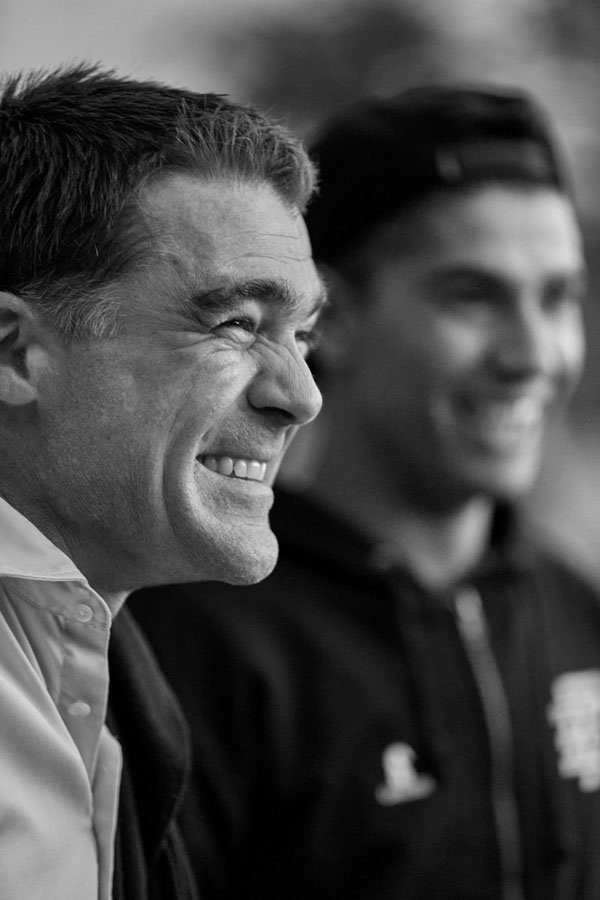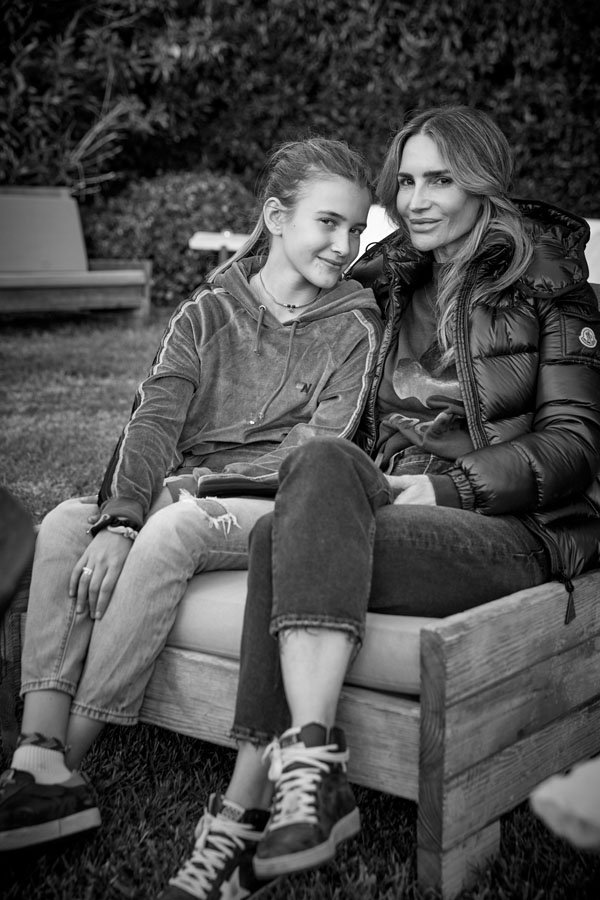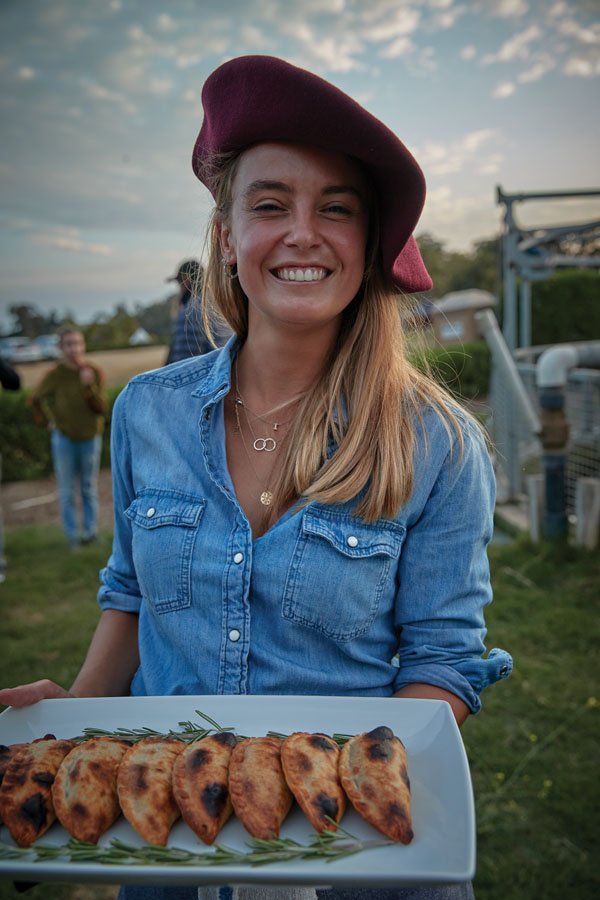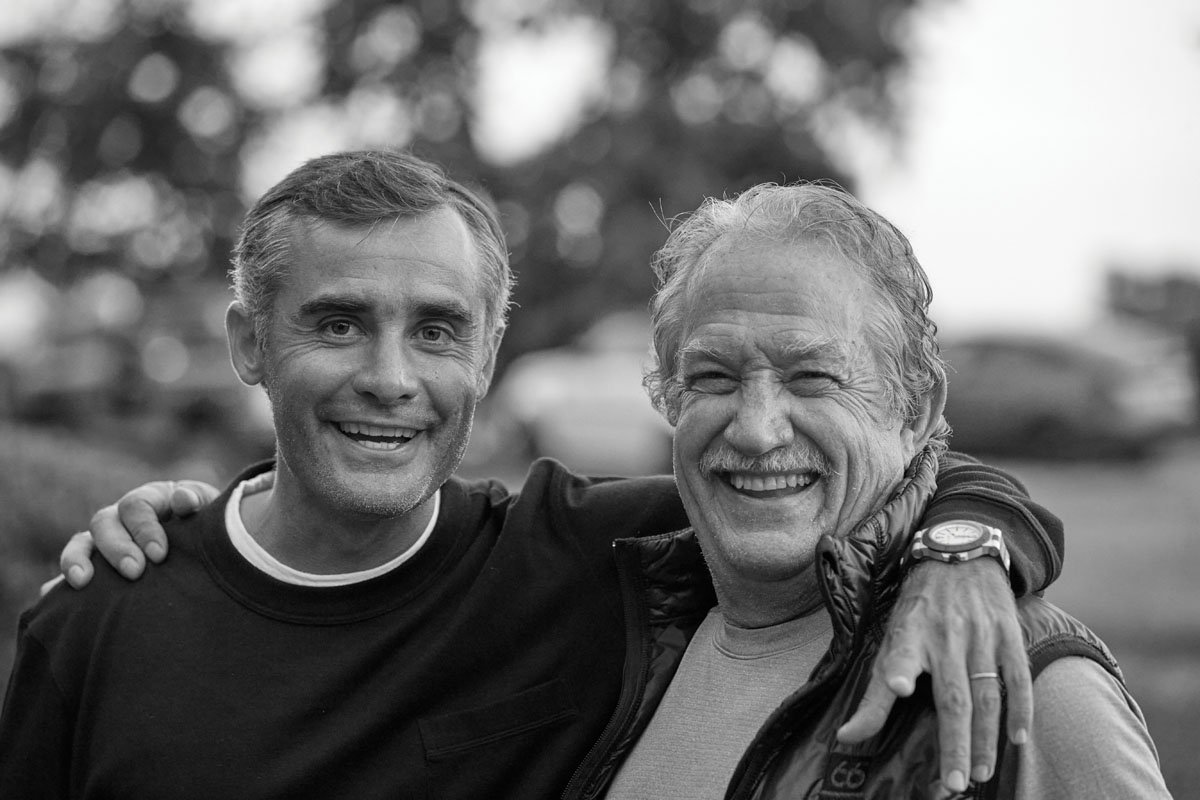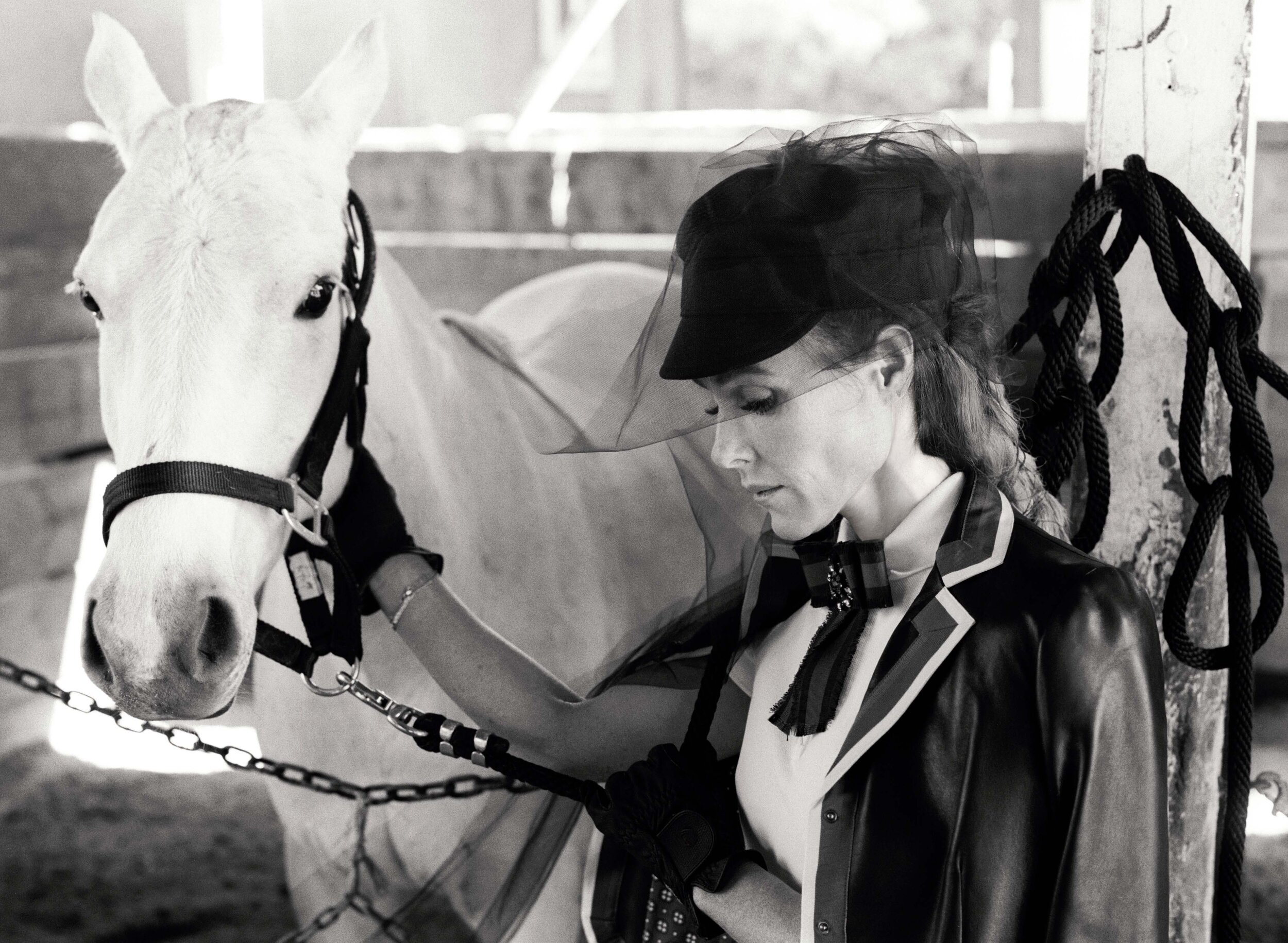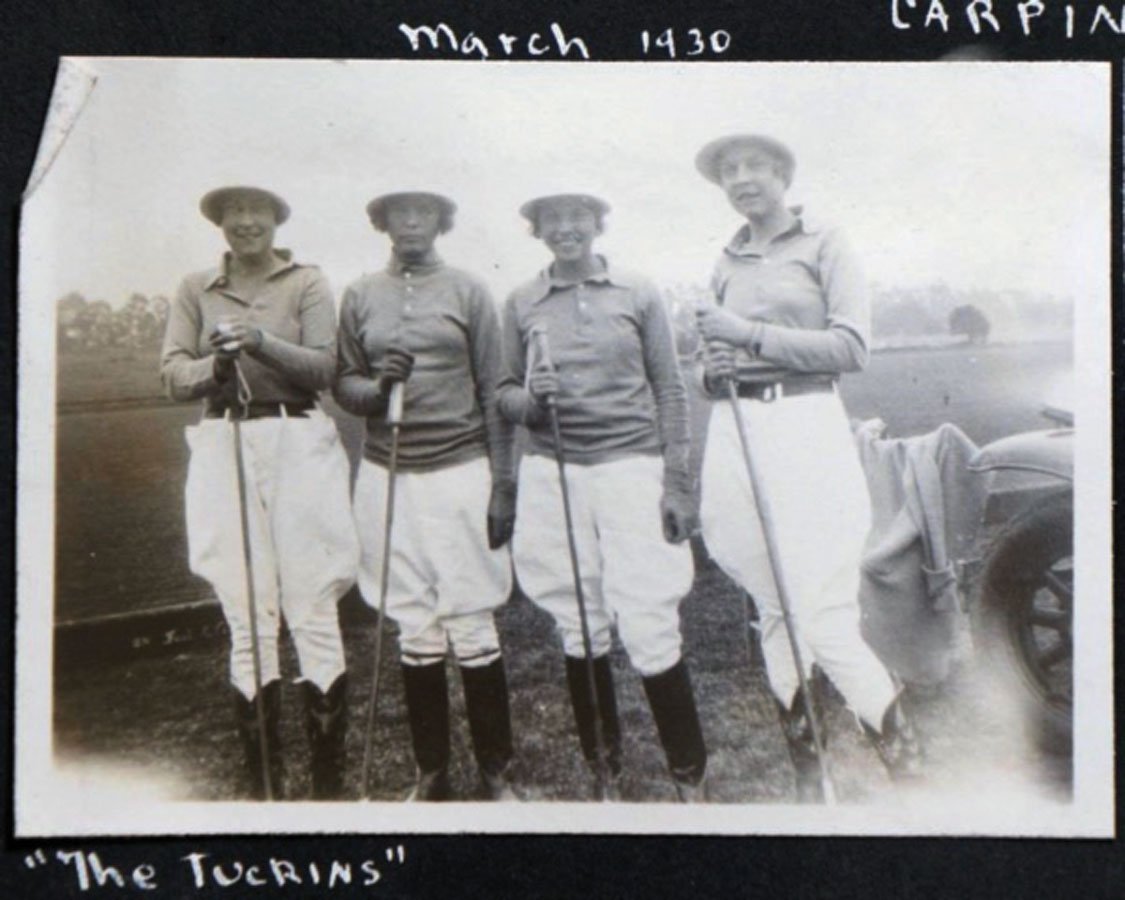Game Changer
Having broken into polo’s illustrious boys’ club, Sarah Siegel-Magness has her sights set on revolutionizing the sport for a new generation.
Having broken into polo’s illustrious boys’ club, Sarah Siegel-Magness has her sights set on revolutionizing the sport for a new generation.
Written by Kelsey McKinnon
Photography by Dewey Nicks
When Sarah Siegel-Magness takes the polo field on one of her pedigreed Argentinian ponies, the petite powerhouse prefers an all-black uniform to traditional white riding pants. The bold sartorial statement is just one of the many ways that Siegel-Magness, who is usually the only woman on the field, is rewriting the rules of the game. “Polo in America is set in tradition, and in many ways I love the consistency,” says Siegel-Magness. “[But] this is 2022, we must make changes in order to progress.”
“Polo in America is set in tradition, and in many ways I love the consistency. says Siegel-Magness. “[But] this is 2022, we must make changes in order to progress.”
Since Siegel-Magness first picked up a mallet five years ago, she has dedicated her life to the sport—playing six days a week at the highest levels of the game. She and her husband, Gary, who both have roots in from Colorado, have purchased polo estates around the world. That includes one in Mexico and a 65-acre property in Santa Barbara, where she regularly plays with the likes of Adolfo Cambiaso, Prince Harry, and Nacho Figueras. Siegel-Magness counts Cambiaso as a close friend—they are neighbors at Cambiaso’s elite polo club in Argentina, La Dolfina—and she also turns to him for horsepower; the Argentinian superstar was a pioneer in horse cloning and now breeds some of the world’s most coveted ponies. “It was like I had been driving a Mazda all my life and then getting to drive a Ferrari,” she says of switching to one of Cambiaso’s ponies.
“We share a lot on the field but off the field as well,” says Cambiaso, who is grateful for the direction Siegel-Magness is steering the game. “It is really impressive to see how many female players are starting to take part,” he says.
“It was like I had been driving a Mazda all my life and then getting to drive a Ferrari,” she says of switching to one of Cambiaso’s ponies.”
During the season Siegel-Magness competes with her team, which is sponsored by Dundas. Siegel-Magness and her husband are business partners of the Dundas fashion brand, and Siegel-Magness sits on the board. In the past, Siegel-Magness was also a successful film director and producer with credits including Precious and Crazy Kind of Love.
Now that she’s traded movie sets for horse stables, Siegel-Magness intends to climb to the top of this male-dominated field as well. “Of course, I could say I want to win every important tournament,” she says, “but at the end of the day the experience is not the win, it’s the stuff along the way.”
See the story in our digital edition
A Lucky Horseshoe
Memo and Meghan Gracida see polo in the future of the Santa Ynez Valley
Memo and Meghan Gracida see polo in the future of the Santa Ynez Valley
Written by Joan Tapper
Photographs by Dewey Nicks
You can’t miss the gleaming silver. Sit down to chat with Guillermo “Memo” Gracida and his wife, Meghan, in their Santa Ynez ranch house, and your eye inevitably turns to the shelves of shining trophies and statues that honor his achievements as a top world polo player. There’s a replica of the U.S. Polo Open cup, which Memo has won 16 times in his career. There’s the coveted fluted bowl from the Argentine Open, the Gold Cup of the Americas trophy, and the British Queen’s Cup, which Elizabeth II presented to Memo twice. The hardware is impressive, but what Memo really wants to talk about is why he and Meghan have now relocated to this area and his vision for the property they call La Herradura.
The word means “horseshoe,” he says, and it hearkens back to the name of the Mexican polo team Memo’s father fielded with his siblings. “They were the only set of four brothers to win the U.S. Open,” he says proudly. “That was in 1946. Father was a great mentor. He taught me to play and gave me a love of the sport.”
And that’s what Memo is now hoping to pass on to others at La Herradura by teaching and coaching both people and horses. “We came to the New World of the West Coast with energy to create a polo center. This place is a dream for a horse lover,” he says. “It’s the ultimate horse property.”
“La Herradura means “horseshoe,” and it hearkens back to the name of the Mexican polo team Memo’s father fielded with his siblings. “They were the only set of four brothers to win the U.S. Open,” Memo says proudly”
Memo has been coming to this part of California for the last 30 years, usually just for three or four weeks at a time as part of the professional circuit that moves from Palm Beach to England, Santa Barbara, Texas, New York, and Argentina. He happened to be here in September 2012, waiting out a hurricane in Florida, when he met Meghan, whose roots are in Santa Ynez and San Luis Obispo. When she began working in West Palm Beach a few months later, they reconnected and, after a whirlwind courtship, married almost five years ago. They bought the 45-acre ranch—a onetime Arabian horse farm—in December 2017.
The 3,800-square-foot house on the property, built in 1973, needed more than a little work. Walls were removed, the kitchen and master suite renovated, and the exterior totally redesigned, with other changes still to come. But the equestrian facilities—including barns, 60 stalls, fences, and paddocks—were all horse ready.
“We came to the New World of the West Coast with energy to create a polo center. This place is a dream for a horse lover. It’s the ultimate horse property.”
There are three large barns, including one with living quarters for half a dozen grooms, and 13 big pastures. “We have 100 horses, both ours and other people’s,” says Memo, “and our days are spent looking after them—working them, resting them, training them every day. We also run clinics and matches. It’s a three-ring circus!”
“People come for clinics and lessons from all over the world,” he continues. “There aren’t so many polo schools on the West Coast. My goal is to get new blood in the game and teach all different levels. We have ideal beginners’ horses—responsive and well-trained—and a safe environment with a staff dedicated to producing the best service.”
And the polo players—newbies and veterans alike—are learning from one of the best. Memo held a 10 handicap—the highest rating—consecutively for 21 years, and though he doesn’t play competitively as often now, he enjoys teaching others. That includes Meghan, who had never ridden before but now holds a 3 woman’s handicap and plays regularly on La Herradura’s women’s team. “She’s a great athlete,” Memo says. “She can ride any horse.”
“I get great satisfaction from seeing a person learn to make a great play,” he continues, “and seeing young horses and young players do something new.”
“When you’re on the field, you’re not thinking about anything else. The connection of horse and person is epic”
Until recently, weekend matches as well as riding lessons and stick-and-ball sessions have taken place at Piocho ranch, five minutes away. But as of September, there’s a new polo field at La Herradura. Creating the venue has been a huge project. “It was a horse pasture,” says Memo, “and to grow grass for a polo field, you have to do a lot of prep. We were lucky to get a lot of fill from the mudslides to even it out. Then we seeded it. You have to let the weeds grow out, then you can kill them. It’s taken a year and a half start to finish.”
The Gracidas hope to develop other fields in the future, with the goal of building a club with 150 members. Polo is “great for people who have been successful in life and are looking for a challenge,” says Memo. “But there haven’t been a lot of opportunities to learn, or a place nearby where people can try the game and see if they like it.” In fact, even though people may think of the Santa Ynez Valley as horse country, the number of animals has dwindled as ranch land has been converted to vineyards.
Meghan points out that for Memo, the important things are his family, horses, and polo, and indeed he’s a superb advocate for the sport. “When you’re on the field,” he says, “you’re not thinking about anything else. The connection of horse and person is epic.” •
See the story in our digital magazine
Power of the Pony
Investing in polo horses is crucial to getting into the game
Investing in polo horses is crucial to getting into the game
Written by Megan Kozminski
Photographs by Courtney Ellzey
Some people jump in and purchase a string of half a dozen ponies straight away; others buy just one to start, testing out their new passion (and pocketbook). Shopping for that perfect first pony can be complicated. Polo horses have personalities, habits, strengths, and weaknesses, just like people. There’s also a lot to learn about the sport of polo, the horse industry, and even basic equine science.
Find people in the industry who you trust. Determine your budget and gather information from seasoned coaches, players, or professionals who can help you navigate.
Next comes the fun part: Ride as many polo ponies as possible. Try a pony at least twice—a stick and ball session, and if that goes well, a practice or game chukker. If you are trying dozens of horses, keep notes on the age, conformation, and under-saddle details for each, and always have a reputable veterinarian conduct a prepurchase equine health exam.
The most important advice to any polo shopper is buy the pony that makes you a better player based on your current skill and handicap. You want to feel like a million bucks every time you walk onto the field. Always keep in mind that after the purchase, it costs the same to feed a mediocre horse as it does to feed your perfect equine partner.
“This year, I realized the power of the pony. It took me four years to understand exactly what that means. For me, upgrading to the first-class breeding program of La Dolfina Valiente and purchasing the next-level string will give me the tools to take my game to the next level. This means compact, speedy, handy horses that stop and turn on a dime. When you’re really new to the game, you don’t realize how important that is. Then one day you do! Polo is 70 percent horse, 30 percent rider.”
See the story in our digital edition
Double Vision
Polo player, professional model, and Instagram It girl Zinta Braukis strikes a pose at Cancha de Estrellas
Polo player, professional model, and Instagram It girl Zinta Braukis
strikes a pose at Cancha de Estrellas
Photographs by Courtney Ellzey
Hair and Makeup by Tomiko Taft
WHO Zinta Braukis, often called “Z” by family and friends.
“There is a fantastic, relaxed pace to life in Santa Barbara—it’s a great balance to my career and the adrenaline rush of racing down the fields on a galloping horse.”
WHAT Working as a professional model by day with such brands as Ralph Lauren and Lucchese, Braukis—who has been playing polo since the age of 14—is at her happiest in the saddle with her horses in Los Angeles and Indio.
DOUBLE DUTY Dubbed the equine Instagram It girl, @zintapolo has more than 80,000 followers and is in demand for her lifestyle posts of horses and polo.
TRIPLE THREAT Athletic, adventurous, and adrenaline seeking, Z recently earned her helicopter pilot license.
PASSION PROJECT “As with people, each horse’s personality is unique. It is truly a special relationship that develops. I teach them to trust me and that mutual respect is possible. It is an immense joy to see them flourish as a result—both in their personality and as an athlete.”
WORDS TO PLAY BY “To paraphrase Alexander the Great (one of the first polo players in history), ‘The world is the ball, I am the mallet!’”
Throughout: Tops, Rocio G., rociog.com; boots, Lucchese, lucchese.com; hats, Vanner, vannerhats.com. Special thanks to Sarah Siegel-Magness and Joe Henderson of Cancha de Estrellas for use of horses and location.
See the story in our digital edition
The Provocateur
Emerging polo patron and movie producer Sarah Siegel-Magness leads a passionate life on and off the field
Emerging polo patron and movie producer Sarah Siegel-Magness leads a passionate life on and off the field
Written by Katherine Stewart | Photographs by Tasya Van Ree
If you hit the polo fields around 8 am, you might see her streaking by on her polo pony, mallet raised. Or astride one of her thoroughbreds, upright in the saddle. Four days a week, Sarah Siegel-Magness plays matches, either at the Santa Barbara Polo & Racquet Club or on the 65-acre estate adjacent to the club that she and her husband purchased last year. The property features three polo fields and a jumping arena with a view of the ocean. On other days she’s training with her coaches, polo legends Joe Henderson and Memo Gracida.
“We came to Santa Barbara initially to play polo but fell in love with the community.”
“I am a woman in a sea of men, and I’m also quite petite,” Siegel-Magness says. “This is rather unusual but not a disadvantage at all. Polo is a game of the mind. Strength is important, but to power the ball, it’s all about technique.” On the field, she rides like one of the guys, and that’s how she expects to be treated. “I want to be as good as everyone else,” she says, “and play a well-rounded defensive and offensive competitive game.”
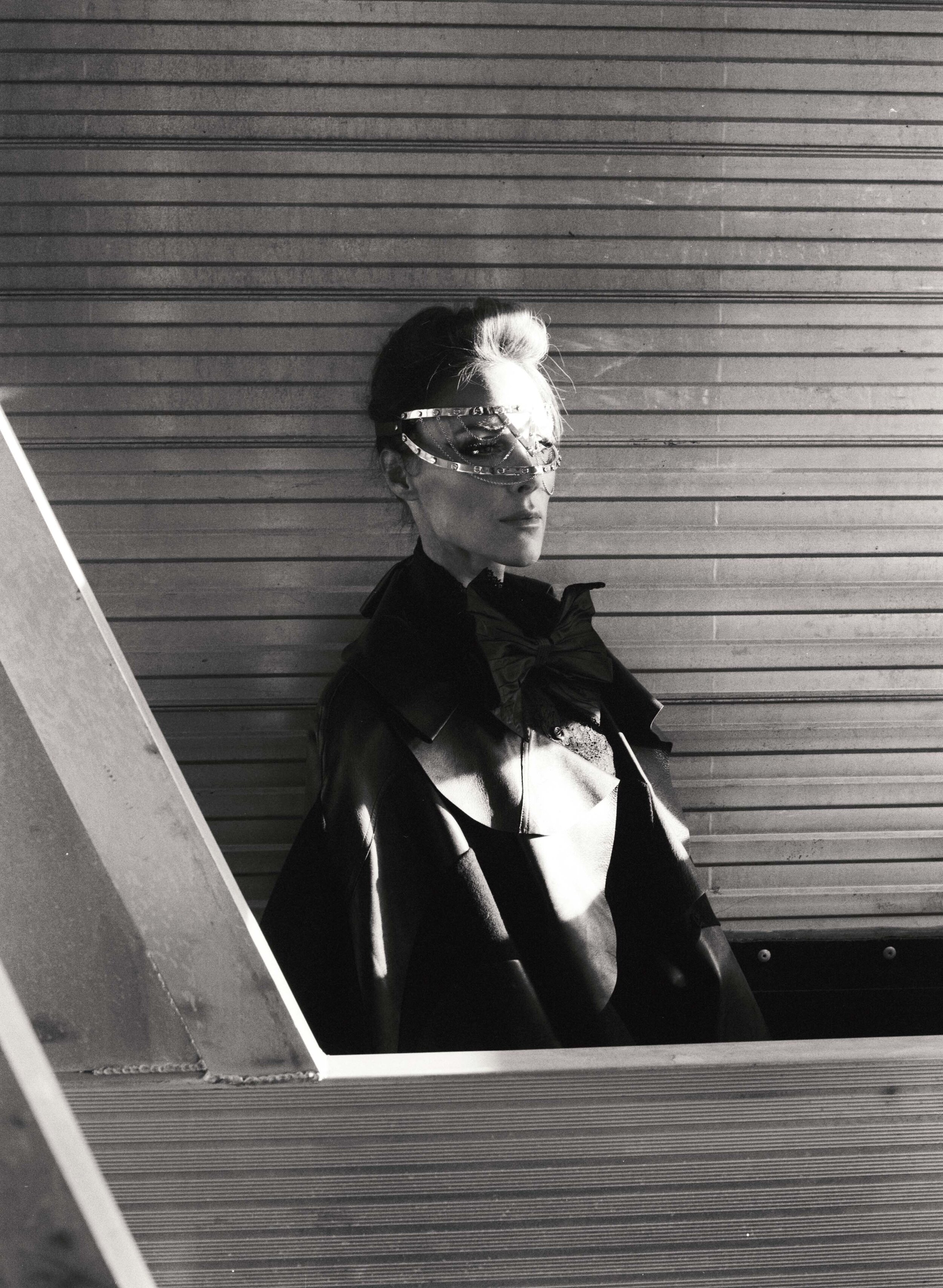


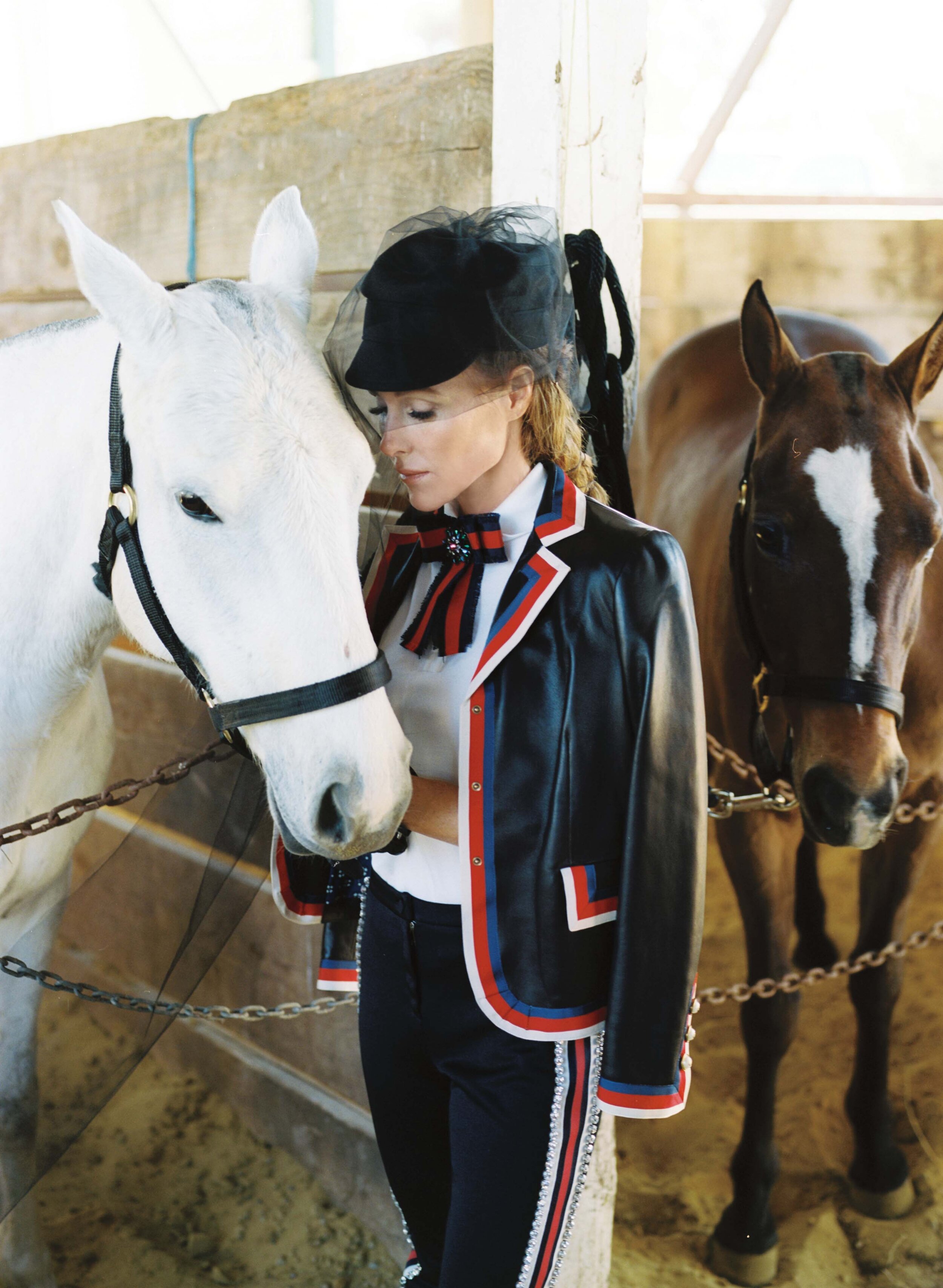
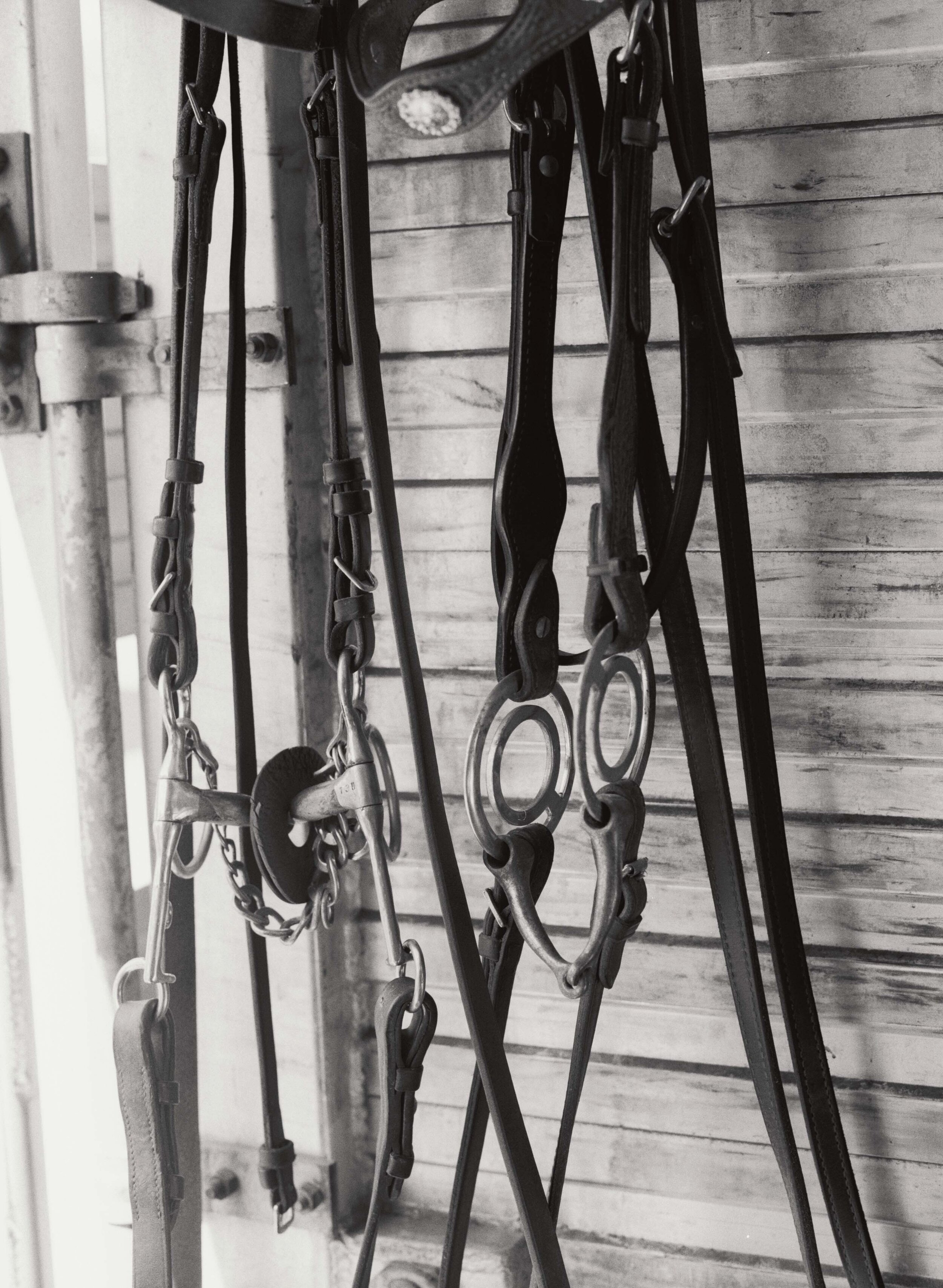
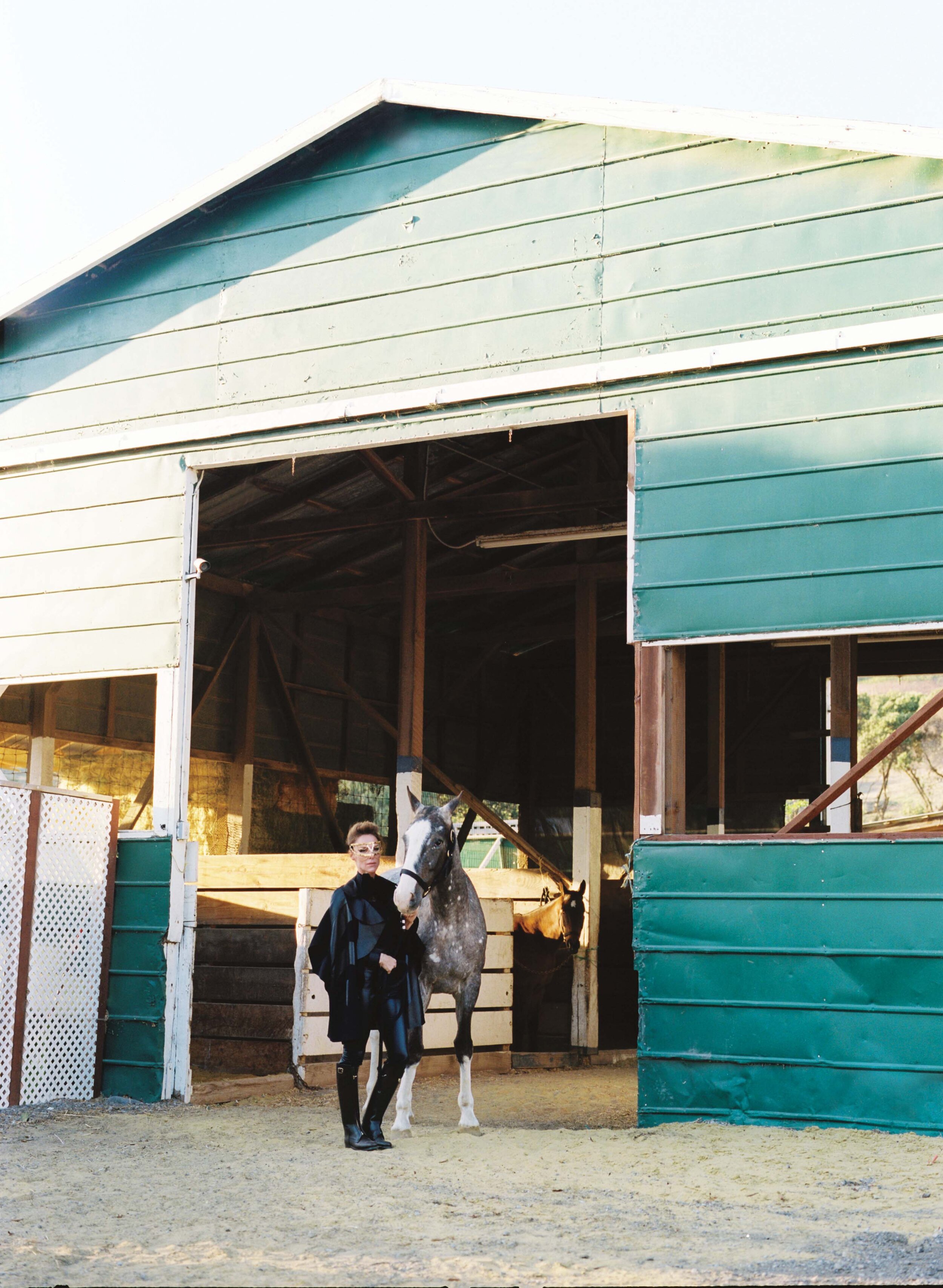
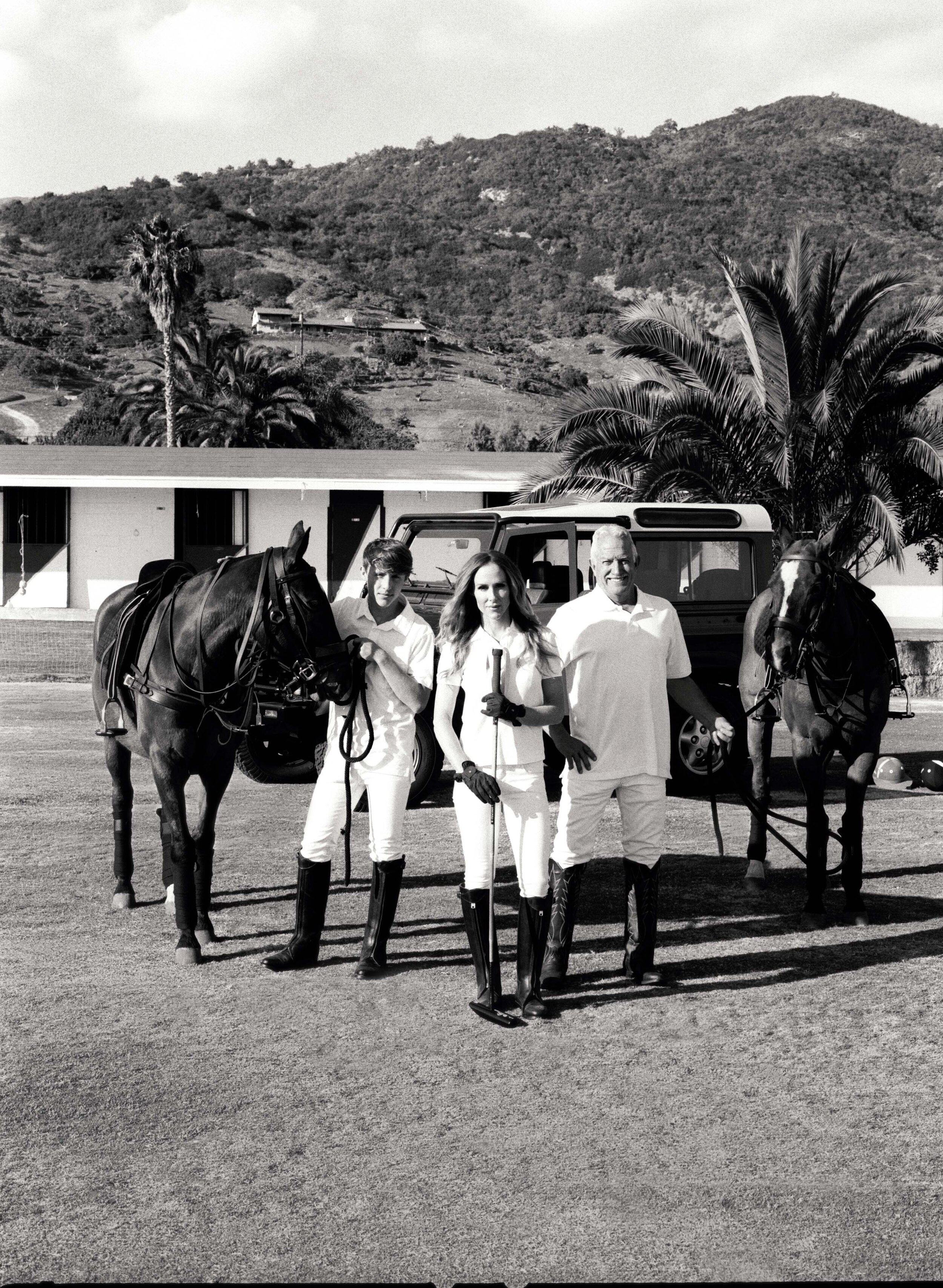
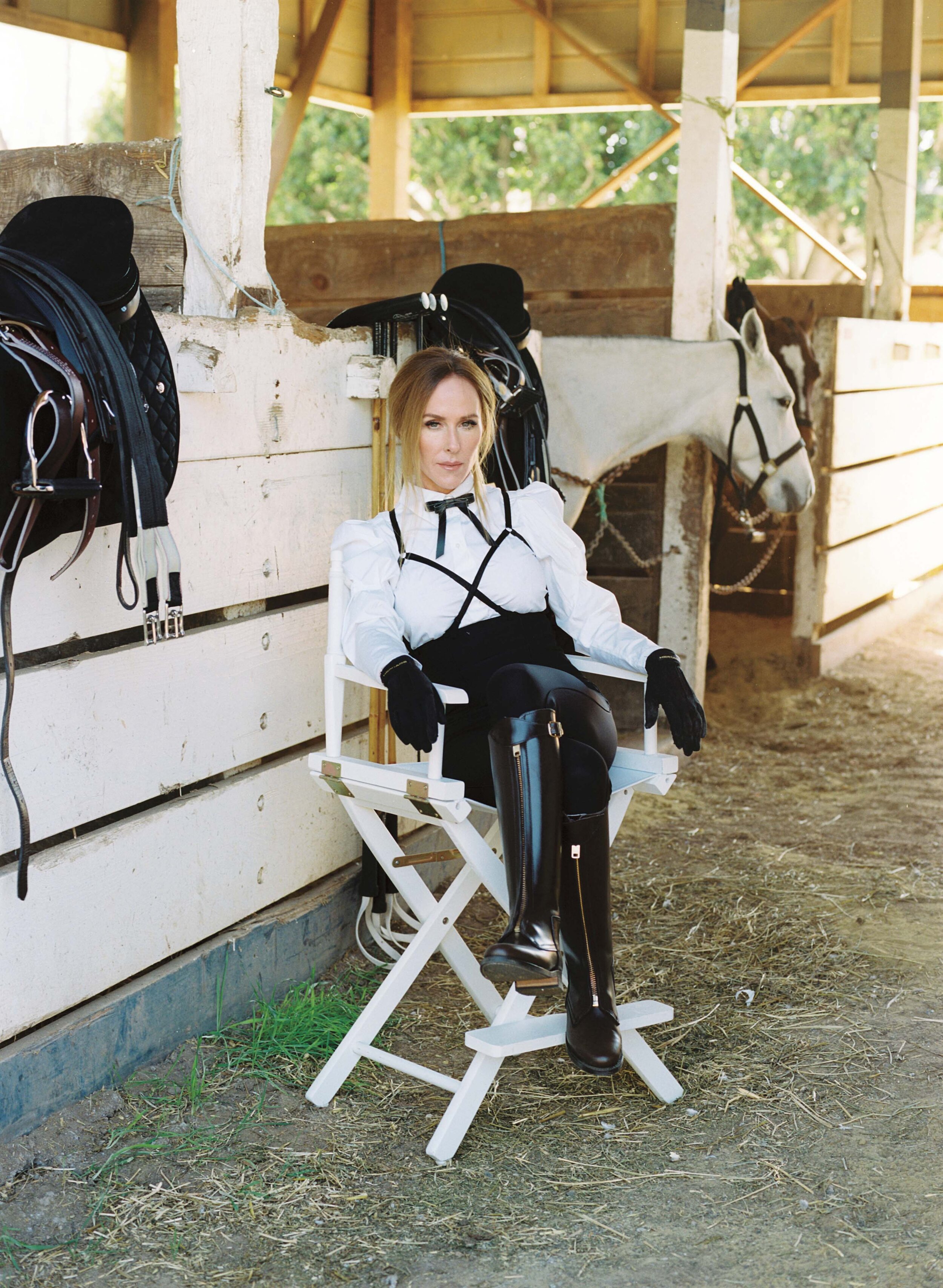
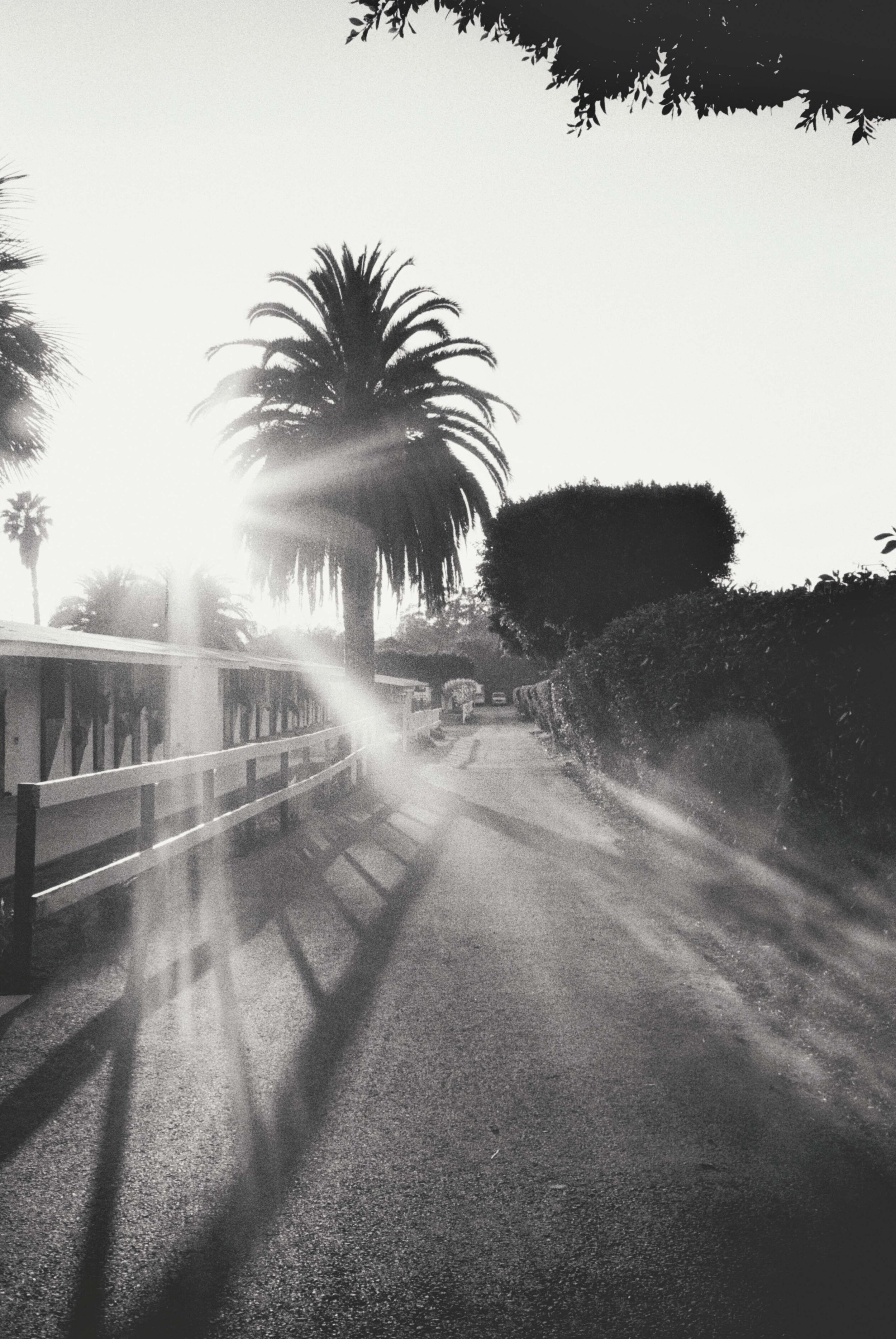
Siegel-Magness certainly has a more varied résumé than most polo players. She is an Oscar-nominated film producer and director whose projects include the award-winning Lionsgate film Precious. She is the cofounder, along with husband Gary Magness, of Smokewood Entertainment, which is committed to the creation of thought-provoking and social justice-minded films. The pair is also active in a range of philanthropic activities, having cofounded the Fresh Air Fund’s Precious Center for Teen Leadership, among other youth-focused organizations and initiatives. “My goal is to create an environment for inner-city kids of Los Angeles to learn polo,” Siegel-Magness says. “That would be a dream.”
Her interest in polo was sparked 17 years ago, when she and Gary wed at Costa Careyes, Mexico, which has an avid polo community. “When I watched my first match, I thought it was the most amazing game I’d ever seen,” she says. “I couldn’t get it out of my brain, but we had no place to play! I literally dreamed of playing polo for years.” Then, three and a half years ago, the Magness family bought a place in Costa Careyes, built a capacious barn, and became benefactors of the polo club, and her devotion to the sport blossomed into a full-time passion.
It was this passion—and her determination to grow as a player—that drew her to Santa Barbara last summer. “From the moment we set foot on this magical property, we fell in love,” she says. “We came to Santa Barbara initially to play polo but fell in love with the community.”
“For any person who has ever thought about learning to play a sport later in life…don’t be afraid.”
Her husband and son Cable, the youngest of the couple’s three children, are active players too, and the family enjoys riding together and even competing against one another. Siegel-Magness says polo is a great way to spend time with family, enjoy nature, and collaborate with men and women of all ages and backgrounds. But she is not the type of person to coast. “The minute you get complacent about the game, you will stop growing,” she says. “I am humbled every day being around the pros.”
She is presently focusing her creative passions on expanding polo opportunities in Santa Barbara. The Magness family is working with the polo club to create an 8-goal Rincon League that will be played from June through October. It is absorbing work, but there’s nothing else she’d rather do. “I compare everything I do to polo,” she says. “If it is not more fun or more interesting than polo, I don’t have time to do it!”●
See the story in our digital magazine
Rustic Romance
Daniel and Elena De Meyer put love into the game and their home
Daniel and Elena De Meyer put love into the game and their home
Written by Jennifer Blaise Kramer
Photographs by Megan Sorel
“It’s hard if you don’t both play, the other partner has to be so tolerant,” Elena says. “It’s great we can be together.”
For Daniel and Elena De Meyer, their love story started on polo fields. The pair—she’s an actress, he’s in finance—met at the Will Rogers Polo Club in Los Angeles in 2002 and soon started dating. The fact that they both loved the horses, the tournaments, the wins, and the losses made it much easier to spend a lot of time with one another. “It’s hard if you don’t both play, the other partner has to be so tolerant,” Elena says. “It’s great we can be together.”
That passion for polo continues to fuel their marriage—and even real estate decisions. Five years ago, they moved from the Mission Rose Garden area to be closer to the Santa Barbara Polo & Racquet Club, looking for a place where their school-age daughter, Olivia, could grow up around horses, farmers, and nature. Since the couple has European roots—she’s from Romania and he has family in Belgium—they wanted a home base in California that felt like the best of both worlds. They found a cottage-style home not far from the polo field that looks as if it’s been plucked from the English countryside and dropped right in Carpinteria.
“They found a cottage-style home not far from the polo field that looks as if it’s been plucked from the English countryside and dropped right in Carpinteria.”
“With timbered homes and horse country, it reminded me a lot of the Normandy coastline…all rolled up into a California scene,” says Daniel. That European romance is apparent at first glance with rounded rooflines, vaulted ceilings, wood beams, and warm sconces, which lend a cozy feel throughout the library and kitchen, where copper pots hang overhead.
To enhance the rustic feel, they painted the walls in a soft custom blend of Flemish gray that Daniel calls the color of parchment and then layered on Belgian linen drapery. “The French are masters at shades of gray,” says Daniel, who did most of the home improvements himself. “We wanted to make it cozy, not grand, and give it that aged look.”
French doors lead to various outdoor nooks—from a kitchen cutting garden that they keep full of seasonal veggies, flowers, and herbs, to a fragrant lemon garden to a tiered lawn with trellised walkways weaving through the one-acre property. In the summer, they picnic by the garden with friends before matches; in the fall, they throw a big autumn harvest party; during the holidays, all the old oaks are lit up when relatives come to visit. When not entertaining or playing low-goal polo together, the family of three heads overseas, which is always a source of design inspiration.
“When you visit family as much as we do, you see how they do things—that blend of old and new,” Daniel says. “We come back with ideas every time.”
See the story in our digital edition
The Grande Dame
Celebrating the life and legacy of Elizabeth Skene
Celebrating the life and legacy of Elizabeth Skene
Written by Joan Tapper
When Elizabeth Skene passed away on January 16 at the age of 104, it marked the end of an era at the Santa Barbara Polo & Racquet Club. She was a familiar figure at Sunday games throughout the season—lovely, gracious, and ever attentive to the action on the field. And as the widow of famed polo player Robert Skene, she was a link to the club’s history—to some of its darkest, most precarious days and also to many instances of world-class games and glittering renown.
Born in Australia, Elizabeth was the daughter of a sheep and cattle rancher. She met Robert—son of an 8-goal polo player and horse breeder—at a country dance when they were both 16. One circuit on the dance floor led to a lifelong romance that spanned four continents and nearly seven decades.
Robert’s talent as a polo player took him to India and then to England in 1937, where Elizabeth soon joined him. They had a fashionable wedding there in 1938 and got their first glimpse of Santa Barbara the following year, when “Hurricane Bob,” as he was known, had a practice match here as a member of the English team bound for a tournament on the East Coast.
“Elizabeth and Bob Skene brought even more fame to the Santa Barbara Polo Club than the club’s recognition as having arguably the best playing fields in the world.”
Glen Holden, SBPRC trustee of distinction
Difficult days were ahead, however. Robert enlisted in India’s Gurkha cavalry, was posted to Singapore, and after that city fell to the Japanese, was incarcerated in the notorious Changi prison. A single postcard was the only word Elizabeth had of him for three and a half years.
They were reunited in 1945 and eventually moved to California, where Robert took over as manager of the Santa Barbara Polo Club in 1960. He won the Argentine Open twice in 1954 and 1956 with team El Tebol and was on the Santa Barbara team that won the U.S. Open in 1962. These were just some of many trophies and honors for a player who held a 10-goal handicap for 17 years. He left for several seasons but returned in 1969 as changes in ownership and dwindling memberships made the club’s future uncertain. Robert’s determination and tireless hard work—with Elizabeth’s help and that of three generous and visionary trustees—saved the club. When Robert died in 1997, SBPRC’s future was secure.
Elizabeth continued to attend games and hand out trophies for the tournament that bore her husband’s name. “She lived for the polo season,” says Paige Beard, a friend and longtime polo player. “It was a highlight of her year.”
“She had a remarkable life,” adds her son, Curtis. “She had kept a diary through various periods of her life and had intended to publish it.” She became increasingly frail, however. After being safely evacuated during the Thomas Fire, she moved to Serenity House on January 8 and was unaware that the house she had lived in for decades was inundated by the subsequent mudslide. She passed on as gracefully as she led her life, in her sleep, a week later.
Says Curtis, “She would want to be remembered for three things: First, she lived life to the best of her ability, always guided by her spiritual beliefs. Second, she was a steadfast partner in life to my father. And third, the tremendous efforts she and my father made to save the Santa Barbara Polo Club.”
“Elizabeth and Bob Skene brought even more fame to the Santa Barbara Polo Club than the club’s recognition as having arguably the best playing fields in the world,” says Glen Holden, an SBPRC trustee of distinction. “As a polo couple, they were invited to England by Queen Elizabeth for special recognition in 1992. And when I invited Prince William and Kate for the club’s 100th anniversary, Prince William asked to meet Elizabeth. She looked beautiful that day. She was elegant. She was a wonderful lady, and we’ll miss her.”
See the story in our digital edition
Polo Pioneers
The evolution of women players in Santa Barbara.
The Evolution of Women Players in Santa Barbara
Compiled and Written by Nigel Gallimore
Inside the 1937-built vintage cottage-style Santa Barbara Polo & Racquet Club clubhouse, the hunter-green walls are lined with decades’ worth of photos of teams accepting the silver cups, bowls, and trophies locked in glass-fronted cases. The beginning of the club’s story, however, predates that building, the trophies, and even the adjacent fields.
From the start of polo in Santa Barbara, the sport was peripatetic from 1899 until it found a permanent home in 1926 at the current location in Carpinteria. Polo in Santa Barbara has a long heritage starting on April 27, 1894, when an exhibition match was played at the Agricultural Park’s Flower Festival (now the location of the Lower East side between the freeway and East Beach). This match encouraged sufficient local interest in the sport, and the first organized polo game in Santa Barbara was played on May 19, 1899, by a team formed of members of the Santa Barbara Country Club. By 1902, the fledgling polo club boasted a 40-member roster and interest in the sport had increased tremendously.
The first purpose-built skin (dirt) polo field was in 1901 on the Westside at the foot of the Mesa, where the players leased 22 acres. It was not until 1916 that the first grass field was built on Middle Road in Montecito and where, on April 1, four women made their first appearance in a mixed polo period. The red team: Dorothy Tweedy, Ruth Peabody, Charles Dabney, and Elmer Boeseke Jr. played against the blue team: Katherine Harvey, Lorna Tweedy, Graham Miles, and Frederick Leadbetter. This is also where local estate owner and socialite Esther Fiske Hammond was among the women players.
On March 27, 1931, the Girls’ Championship of Santa Barbara was played on Fleischmann Field. It is significant that this particular game was included in the United States Polo Association’s yearbook, as this mention is perhaps the first acknowledgment by the USPA that women played polo in the United States. By 1932, many women in California were forming their own polo teams. Local player Ann Gavit Jackson (of the Palmer Jackson family) had a team in Santa Barbara. Dorothy Wheeler of Santa Cruz wrote to the USPA in New York for some help in organization, and secretary/treasurer Mr. F.S. O’Reiley replied that the general opinion was that “polo is not a women’s game!” The women in California knew this was nonsense and successfully formed their own organization with the help of the male players in the state.
In June 1934, the first tournament of the Pacific Coast Women’s Polo Association was held. Two years later, it became the United States Women’s Polo Association. At one time there were 130 women players up and down the California coast.
In late summer 1937, club owners Ann Jackson—with husband Charles “Pete”—took a women’s Santa Barbara polo team to play in Long Island. Unfortunately, the association came to an end at the start of World War II. In the same year, Ann Jackson went on to build the cottage-style polo clubhouse still standing to date. Mr. and Mrs. Jackson were married in Santa Barbara in 1927 and lived in Montecito until their deaths (“Pete” in 1978, Ann in 1990). The Jackson family eventually sold the polo club in 1963 to Rudy Tongg of Hawaii.
Today, along with the many other decades of contemporary women players who have closed the gender gap on the field, there are two women patrons (Leigh Brecheen and Dawn Jones) on the club’s board of directors, and nationwide, women’s polo is the fastest-growing sector in the game. ●
See the story in our digital magazine
Heading for the Hills
If the Busch name reminds you of a certain beverage, it’s time to think again, as polo patron Andy Busch debuts Folded Hills wines
If the Busch name reminds you of a certain beverage, it’s time to think again, as polo patron Andy Busch debuts Folded Hills wines
Written by Joan Tapper
Photographs by Erin Feinblatt, Edward Clynes
Tucked between Santa Barbara’s mountains and the Santa Ynez Valley, Folded Hills is a postcard of ranch life. White fences edge sprawling lawns and a plantation-style estate house is outfitted with a long deck and rocking chairs. Heritage pigs play near the chicken coop—where fresh eggs are gathered each morning—and those iconic Clydesdales roam the fields.
Owner Andy Busch—who, as a 5-goal player, served as captain for the U.S. World Cup team for the Federation of International Polo—retired from professional-level polo after 28 years and loves his horses. Looking forward to the high-goal games this season, he says, “I plan to be there watching friends compete. I love to see the professional players and the incredible horses perform on the Santa Barbara Polo & Racquet Club fields—there’s nothing like it.”
Now, the patron of Grant’s Farm polo team is devoted to life on the farm. He and his wife, Kim, have poured love into every inch of their property (which a few lucky guests get to visit each year), and a vineyard seemed like a natural extension of the land. “When we started working on wine five years ago, we put together a team of professionals to assess the soils and ocean-influenced microclimate,” he says. The environment proved to be well suited to Rhône varietals, which was “a perfect fit” for Angela Osborne, the New Zealand-born winemaker and general manager who is known as a “guru of Grenache.” The grapes are grown with a common interest in sustainability, adds Busch, who has planted the vineyard organically, just like his row crops.
“Angela Osborne, the New Zealand-born winemaker and general manager is known as a “guru of Grenache.””
A winery and tasting room are envisioned for 2018, set near the Farmstead, an idyllic produce stand that sells organic crops grown on the ranch along with baked goods. In the meantime, the first vintages include Lilly Rosé, an estate rosé that’s an homage to Busch’s great-grandmother, Lilly Anheuser Busch and six generations of family women down to his granddaughter Lilly; Grant Grenache, which recalls President Ulysses S. Grant, previous owner of the ancestral home, Grant’s Farm, where Andy grew up and was manager for two decades; and August Red, a blend of Grenache and Syrah, named for his father and grandfather. Ballard Canyon Grenache and Syrah are following in late summer with more estate wines planned for 2018. Each bottle is a true reflection of the ranch and a tribute to the family and the legacy.
See the story in our digital edition
Great Shot
Polo—in one form or another—has historically been what I do when I am not shooting or making art.
Photographer Catherine Erb’s eye on the ball
“Polo—in one form or another—has historically been what I do when I am not shooting or making art. For years, the polo photos I took were for fun, family, and friends. I didn’t realize I was capturing that much information. One day I realized I had a decade of polo photography that told countless stories.”
“The summer of 2017 will mark the 15th I have spent in Santa Barbara. They’ve become special markers by which I measure my own and my children’s growth both physically and spiritually,” says Erb. “I use my time in Santa Barbara to reconnect and center, and more often than not I leave with a wave of new ideas, with new work already started, or ready to begin as soon as I get to the studio.” Michalita #1, mixed-media photo encaustic, 36 x 48 in. Opposite: Untitled polo #15, photo encaustic, 48 x 36 in.
“I began experimenting and replaced my sharp Nikon lens with homemade lenses that allowed me to capture the sport in an ethereal, layered, painterly manner. Some of the photos have made it to the studio, where I print them on watercolor paper, attach them to birch panels, and then apply layers of oil pigments and encaustic wax. Each finished panel represents a memory or dream of Santa Barbara, polo, and our special summers spent here.”
Clockwise from top: Untitled polo #18, mixed-media photo encaustic, 24 x 24 in.; Untitled polo #17, mixed-media photo encaustic, 36 x 36 in.; Untitled polo #20, mixed-media photo encaustic, 40 x 40 in.; Untitled polo #16, mixed-media photo encaustic, 24 x 24 in.
Untitled horse study, black-and-white pigment print, 17 x 22 in.
See the story in our digital edition
Young Americans
Old school meets new school with Jake and Luke Klentner teaming up with Kasimira Miller
Old school meets new school
with Jake and Luke Klentner teaming up with Kasimira Miller
Photographs by Michael Haber
Styled by Shadi Beccai
Model: Kasimira Miller, Next LA. Makeup by Geoffrey Rodriguez using Chanel Beaute. Hair by Dritan vushaj. Interns: emily Calkins and Meghan Campbell
See the story in our digital edition
The Ambassador
Nacho Figueras, the Argentine polo player who has seduced us into a world of luxury… Paired with his soul mate—a proverbial force of nature—his equally stunning wife, Delfina Blaquier, this Latin duo is traversing continents and going for goal on the Left Coast
Nacho Figueras, the Argentine polo player who has seduced us into a world of luxury…Paired with his soul mate—a proverbial force of nature—his equally stunning wife, Delfina Blaquier, this Latin duo is traversing continents and going for goal on the Left Coast
Written by Gina Tolleson
Photographs by Dewey Nicks
Styled by Lindsay Pogemiller and Alyssa Sutter/Starworks
“A mission in my life is to bring polo to the world a little more,” says Nacho Figueras, who has saddled up with both Prince William and Prince Harry and cohosts the annual bicoastal Veuve Clicquot Polo Classics on Manhattan’s Governors Island and at
Pacific Palisades’s Will Rogers State Park. The 39-year-old is as comfortable straddling a horse and hitting the game-winning goal as he is in front of the camera modeling for major designers, most notably with Ralph Lauren for the past 10 years.
“When you see the horses race down the field, it is very emotional” says Delfina. “You know the grandmother and the aunts of those ponies. It’s even more special to watch our own horse, because it’s like having your own child.”
Nacho Figueras is polo’s David Beckham. Married to his teenage sweetheart, photographer and model Delfina Blaquier, the jet-setting father of four travels the globe with his picture-perfect brood in tow. The handsome Argentine rose to fame playing on the fields of the Hamptons, where he just so happened to be discovered by fashion photographer Bruce
Weber at a dinner party. He’s that enviable trifecta—with the look, the family, and the accent to boot. And now they’ve set their sights on the sunny sands of California as a new seasonal hub.
He couldn’t have a better teammate than Delfina. They are the real deal, a modern fairytale in the making. From love at first sight in their native Buenos Aires to a wedding on the family’s estancia in 2004 and whirlwind trots around the world, the charming couple even starred together in Ralph Lauren’s 2011 Romance campaign, aptly titled “A Love Story.”
No one knows the glamorous polo world like “Delfi” (as Nacho calls her), who’s watched four generations of players—her grandfather, father, husband, and son—play in countless matches. The striking mother of Hilario, 16, Aurora, 11, Artemio, 6, and Alba, 3, is a force to be reckoned with on a horse as well. A fluid and fearless rider (yes, she commands the reins bareback and barefoot in beaded gowns and swimsuits in these pages), the 5’11” stunner is just as passionate about the game and the life they have created in Argentina and abroad.
“He’s that enviable trifecta—with the look, the family, and the accent to boot. And now they’ve set their sights on the sunny sands of California.”
The couple is currently building a modernist manse outside of Buenos Aires that contains an art studio for Nacho to paint his colorful abstract canvases and to house Delfina’s oversized black-and-white photographs. The barns host more than 500 horses with an adjacent breeding facility that turns out prize-winning ponies at world-class prices. “Horses are a very important part of the game. Without good horses, you can’t win. It’s like race-car driving. You could be the best driver in the world, but if I give you a 1964 Oldsmobile and I drive a Ferrari, you can never beat me,” remarks Nacho. “With polo, it’s more or less the same. If you have great horses and are playing someone who is as good as you but doesn’t have good horses, 99 percent of the time, you will win.”
It’s no surprise that they’re eyeing the ball rolling toward the West Coast—fashion, art, entertainment, music, food, film, and even the luxe biz of polo—layering into the cultural zeitgeist of the new California. New Yorkers are moving to the City of Angels in droves, and our American Riviera is seducing Hamptonites. We also happen to have one of the finest polo clubs in the world. John Muse, president of the Santa Barbara Polo & Racquet Club, adds: “Nacho is a brand of his own in fashion and the equestrian lifestyle. He is one of the most effective promoters of the sport of polo.”
“Santa Barbara has a very special vibe,” says Delfina. “I could make it my home very fast.” The Figueras tribe loves to road-trip up the 101, take trail rides in the Santa Ynez Valley, and watch sunsets at Butterfly. “We love it as a family here,” says Nacho. “The beach, the horses, the people, and of course, the polo club.”
Photographer’s assistants: Henry Han and Albert Fu. Hair by Eric Gabriel. Makeup by Christy Coleman. Production assistant: Charlotte Bryant.
Interns: Catherine McFarland and Kara Pearson. Follow on Instagram: @nachofigueras @delfinablaquier #wearefigueras
See the story in our digital edition
Shape Shifter
The otherworldly dreamscape of the DIVINE EQUINE captured through the lens of artist Tasya van Ree
The otherworldly dreamscape of the DIVINE EQUINE captured through the lens of artist Tasya van Ree
by Gina Tolleson
“Tasya Van Ree’s untitled photograph series Equine Intelligence was shot in Santa Barbara and Joshua Tree.”
“The double-exposed photographs juxtapose the horse with nature. “I wanted to create a world where the two existed in a single space of time, in another dimension.”
“A horse is like a painting of infinite dreams, profound and beautiful.”
See the story in our digital edition
Behind the Hedges
At home when the dust settles on the Klentner Ranch.
At home when the dust settles on the Klentner Ranch
Written by Jennifer Blaise Kramer
Photographs by Michael Haber, Kate Ayrton, Paige Keyser
Make-Up by Tomiko Taft
Three years ago, Amanda Masters and Justin Klentner were living in Los Angeles above the Chateau Marmont and realized their kids would grow up playing on Sunset Boulevard. They decided to make a change and found a 40-acre spot just above the Santa Barbara Polo & Racquet Club in Carpinteria. It offered sweeping views of the polo fields, ocean, and 20 acres of avocado orchards, but the ability to see the scoreboard from the backyard was what ultimately made Klentner say, “I’ll take it!”
For Klentner, polo is more than a hobby. It’s a passion that Masters teasingly calls an obsession. He grew up on a horse farm in Michigan with a polo-playing father. After moving his city kids to what is now their own full-scale polo operation, he was eager to teach them responsibility. Jake, 16, Luke, 14, and Valentina, 8, all care for a number of horses, and last summer, the boys were up before 7 am every day tending to the horses. “It’s not all glamour,” Masters says, with her quick British wit. “There’s a lot of poop.” And dust, which kicks up twice a day when the horses go out for a jaunt.
“Polo is a lot of hard work and commitment whether you’re an amateur or a pro,” Klentner says. “The dream is to play with your family.” Now, this crew competes in leagues together while caring for their 30 horses. A true polo family, they practice at home and host parties and fund-raisers—recently they held a cowboy barbecue with an acoustic performance by Candlebox to raise money for the Santa Barbara Youth Polo Association, helping more kids get a chance to be on the field.
“By day, Klentner is a builder and Masters an interior designer, so unlike many traveling polo players, this family stays put, minding their careers and school-age children. So it was even more important to make Klentner Ranch a forever home, built for entertaining and family dinner every night.”
By day, Klentner is a builder and Masters an interior designer, so unlike many traveling polo players, this family stays put, minding their careers and school-age children. So it was even more important to make Klentner Ranch a forever home, built for entertaining and family dinner every night. The home sports French limestone floors and tall, wide hallways that you could almost imagine a horse walking through (they don’t, however once or twice a deviant horse has wandered into the avocado orchards). Polo nods abound, from brass horses to a boot room to the clubby stag bar downstairs. Artisan details are throughout, but especially on the ceilings in the brick herringbone barreled wine cellar and intricate woodwork with inlaid design in the living areas, enhanced by one-of-a-kind doors from Bali.
“There were sweeping views of the polo fields, ocean, and 20 acres of avocado orchards, but being able to see the scoreboard from the backyard was what ultimately made Klentner say, “I’ll take it!””
For the two barns, they sourced local Santa Barbara stone, making them as gorgeous as possible since the home, guesthouse, and pool area all overlook them. The couple keeps horses there March through December when the animals take a break to go rest at pasture in the desert. “The game is so physical, with contact with one another—they need decompression,” Klentner says. “And I do too,” Masters winks. And what a perfect place to take a breath from it all.
Game On
Summer blacks + whites score high on goal
Summer blacks + whites score high on goal
Photographs by Michael Haber
Produced and styled by Gina Tolleson
Models: Natalia Bonifacci/Ford L.A. and Sebastian Tkacik. Hair by Paul DesMarre/Opus Beauty using Pacifica products. Make-up by Debbie Gallagher/Opus Beauty using Pacifica beauty products. Assisting stylist: Jennie Stierwalt/Your Best Self Stylist. Production assistant: Charlotte Bryant. Interns: Taylor Johnson, Laura Lewis, and Kara Pearson.Polo players : Michael Esparza and Tony Uretz.
Field of Dreams
Every Sunday afternoon from April through October, just inland from Highway 101 in Carpinteria, you can see eight riders wearing white breeches and colorful jerseys, helmets and polished riding boots.
A historical look back at the sport of kings and the legendary lawns of the Santa Barbara Polo Club
By Joan Tapper
Photographs courtesy of the Santa Barbara Polo & Racquet Club
Every Sunday afternoon from April through October, just inland from Highway 101 in Carpinteria, you can see eight riders wearing white breeches and colorful jerseys, helmets and polished riding boots. They gallop across a manicured field in a dazzling display of horsemanship, athletic skill, and hard-driving competition while family and friends watch from the grandstands and grooms tend horses on the sidelines. It’s a festive scene: tailgate picnics beforehand, mid-game interludes when spectators stamp down divots in the grass, and postmatch socializing.
This summer, the Santa Barbara Polo & Racquet Club—the third oldest in the United States—celebrates 104 years of larger-than-life characters, triumphs and losses, family ties, desperate times, and new heights of achievement.
Inside the vintage clubhouse, the hunter-green walls are lined with decades’ worth of photos of teams accepting the silver cups, bowls, and trophies locked in glass-fronted cases. The club’s story, however, predates the building,
the trophies, and even the adjacent fields. It begins on April 18, 1894, when Santa Barbara’s first exhibition polo match took place at the foot of a Garden Street racetrack as part of a spring flower festival.
Gradually, a local contingent managed to learn the game, which had its roots in Central Asia. Polo owes its modern form and popularity, though, to mid-19th-century British Army officers who learned to play in India and subsequently brought their skills home to England. By 1902, Santa Barbara had its own club with 40 members who played for hundreds of spectators. In those early days, there were enough serious riders—including the town’s mayor, Dr. Elmer Boeseke—to have the group recognized by the United States Polo Association in 1911, marking the official birth of the Santa Barbara Polo Club.
The years between World War I and World War II were Santa Barbara’s golden age for the sport. The mayor’s son, Elmer “Long Legs” Boeseke Jr., was emerging as a nationally known player, and as teams arrived by train, grooms walked their horses through town to fields from the Mesa and Hope Ranch to Montecito. Max Fleischmann, heir to a Cincinnati yeast company fortune and an avid player, moved to Santa Barbara, where he’d visited while in California during World War I. In 1923, he bought a burnt-out eucalyptus grove and began to put in a polo field. After three years of nurturing the turf, the first chukker was played. In 1928, Fleischmann added an adjoining 40 acres with two partly developed polo fields. Though games were played elsewhere on occasion, the SBPC had found its home.
And what a home it was—backed by mountains and near a beach where horses could be exercised, Fleischmann’s fields were blessed by unparalleled weather. The club’s fashionable social scene drew players from Hollywood and beyond. Will Rogers, Spencer Tracy, Walt Disney, Darryl Zanuck, and Jack Warner all took to the field for Sunday games, as did banker Averell Harriman, who owned an East Coast stable.
Changes were underway, though, by 1939, when a British team—including future Polo Hall of Famer Robert Skene—played a practice match in Santa Barbara en route to the celebrated Westchester Cup tournament in New York. Fleischmann had already sold off the fields, and after the United States declared war, the club was transferred
to the Jackson family, who would own it for almost two decades. A year later, all play was suspended as soldiers
were stationed on the grounds.
Polo revived after the war, and in 1948, Santa Barbara became home to the prestigious Pacific Coast Open tournament and its coveted five-foot-high silver and gold trophy. In the years that followed, a new set of personalities entered the scene: team sponsor Vic Graber, future Polo Hall of Famer Billy Linfoot, and the Walkers of Long Beach.
“My whole family was involved in polo,” remembers Daniel Walker, now a club trustee. “Grandfather started
playing after World War II. Father came to Santa Barbara in 1958 specifically to play polo.” There’s a picture on the clubhouse wall, he adds, showing four generations of his family on the field decades later: his grandfather still playing at 90; his father, Kenneth; his brother, Henry, who subbed a few chukkers for their grandfather; himself; and son Matthew.
At the time, Santa Barbara was the place to play in the winter. Robert Skene, an admired 10-goal player, took over as manager in 1960, and his athleticism, knowledge of horses, and strategic acumen inspired and attracted top teams. A year later, there was a new owner, too, when Aloha Airlines founder Ruddy Tongg acquired the club. He was determined to bring the country’s top tournament westward, notes his son Ronnie, who played as a student at UC Santa Barbara and later in 1962 won the U.S. Open with teammate Bob Skene. “The politics in those days were really something,” adds Ronnie Tongg. But somehow his father “was able to swing it and brought the Open to Santa Barbara, not only in 1963 but in 1966.”
Yes, Santa Barbara polo was glamorous again, with movie stars like Jayne Mansfield and Zsa Zsa Gabor driving up the coast to hand out the trophies. Fess Parker played. So did actress Stefanie Powers. “One of the real characters was Barbara Hutton’s son, Lance Reventlow,” says Joel Baker, who remembers playing as a teenager.
This being the 1960s, there were wild parties in the clubhouse, too, where the dancing would spill out onto the fields. As the decade ended, though, the music stopped, and the silence was deafening. Ruddy Tongg sold the club to the Azusa Citrus Company, which was eyeing the green fields for a supermarket site. It wasn’t the first time the club had been threatened. Carpinteria High School had almost moved to the grounds, but in 1969, with memberships dwindling, the situation looked dire. Bob Skene, who’d been away for a few years, was called back to manage the club. Though Azusa owned the polo fields, it couldn’t get permission from the county to develop them and couldn’t sell as long as the club kept up rent payments on its month-to-month lease—something Skene made certain. “Father said, ‘We have to save the club,’” recalls Skene’s son, Curtis. “He drove around and got checks for dues to pay the rent.”
“Bob Skene kept the club alive,” says Baker. “He and his wife, Elizabeth, put their own money and time into it.” The world-famous polo player attended county supervisors’ meetings to convince them of the club’s value to Santa Barbara. The supervisors had little interest in polo but even less in a supermarket development. Finally, in the early 1970s, club members devised a plan that won county approval: A polo-playing builder named Harry Hicks would put up condominiums on eight acres of the property, generating money for the club to buy the remaining 60 acres from Azusa. Cheers all around…until a real estate downturn sent Hicks into bankruptcy.
Heroically, Ambassador Glen Holden, Dr. Norman Ringer, and Kenneth Walker picked up the flag. Working with the bank that was foreclosing on the condos, in December 1975, the three established a trusteeship in perpetuity, as long as the field is used for polo activities. Holden, a polo player since the mid-1950s and former ambassador to Jamaica, was in charge of operations, essentially paying the bills until the club began to break even. Walker, a banker, supervised the development of tennis courts and 350-stall stables. “Dr. Ringer was president,” Daniel Walker says, adding that even his mother was involved in improving the grounds. “If it’s not a eucalyptus, my mother planted it.”
They set up the Santa Barbara Polo & Racquet Club to manage the property, renovated the clubhouse, refurbished the Pacific Coast Open trophy, and laid the groundwork for the renaissance of the sport.
The Duke and Duchess of Cambridge attend a July 9, 2011, event benefitting the American Friends of The Royal Foundation of The Duke and Duchess of Cambridge and Prince Harry.
“You can’t beat Southern California, the ocean and mountains, and the weather. People love to come here, and the fields are the best in the world,” insists Holden. “Professionals promote it to their patrons, and the best polo players in the United States play here.”
“Polo is about the intersection of passion for horses, speed, danger, strategy, teamwork, and a life built around one of the most complicated sports in the world,” says Montecito resident Tom Barrack, who has brought his Piocho team to club tournaments for the last 20 years. He adds that the Santa Barbara Polo & Racquet Club “is a sanctuary for horses, players, and fans.”
“It’s a meeting place for the world’s most prestigious men to compete at a sport that they love,” agrees Daniel Walker. “At the end, they’ll shake hands and share a drink at the bar.”
“I have to give credit to God for giving us this place,” says Glen Holden. “But we’re keeping it up. It’s one of the best clubs in the world…a jewel of polo.”








